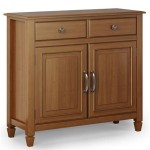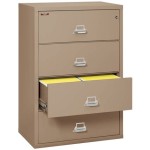File Cabinet Hardware for Hanging Files: A Comprehensive Guide
The efficient organization of documents is crucial for maintaining productivity in any office or home environment. File cabinets are a cornerstone of document management, and the hardware used to support hanging files plays a vital role in their effectiveness. This article provides a detailed exploration of file cabinet hardware specifically designed for hanging files, covering its components, types, materials, installation, and maintenance.
Understanding the Components of Hanging File Hardware
The hardware required for hanging files within a file cabinet consists of several interconnected components. These parts work together to provide a secure and accessible system for organizing and retrieving documents.
Rails: Rails are the primary structural elements that support the weight of the hanging files. They are typically made of metal and run horizontally along the inside of the file cabinet's drawers or frame. The rails provide a track upon which the hanging files slide.
Hangers: Hangers are the components that attach to the hanging files and allow them to be suspended from the rails. These are usually made of metal or durable plastic and feature hooks or clips that interface with the rails.
Supports (Optional): In some file cabinet designs, particularly those designed for heavy-duty use, additional vertical supports may be integrated. These supports provide extra stability and prevent the rails from bending under the weight of numerous files.
Adjustable Dividers (Optional): Adjustable dividers can be used to further organize the hanging files within the drawer. These dividers typically slot into the rails or supports and can be repositioned to create different sections within the drawer.
Types of File Cabinet Hanging File Hardware
The specific type of hardware used for hanging files can vary depending on the design of the file cabinet and the type of hanging files being used. Different file cabinet models use different rail systems and hanger styles. Understanding these variations is essential for selecting the appropriate hardware and ensuring compatibility.
Side-to-Side Rails: This is the most common type of hanging file hardware. The rails run along the sides of the drawer, allowing for hanging files to be placed from front to back. The hangers attach to the file and then hook onto the rails.
Front-to-Back Rails: Less common in standard lateral file cabinets but often found in specialized filing systems, front-to-back rails allow hanging files to be arranged side by side. This configuration is useful for maximizing space in wider drawers or cabinets.
Integrated Rail Systems: Some file cabinets have rails that are integrated directly into the drawer's design. These systems are often more robust and provide a cleaner aesthetic. The hangers are specifically designed to work with these integrated rails.
Wire Frame Systems: Older or budget-friendly file cabinets may utilize wire frame systems, where the rails are constructed from wire rods. These systems are generally less durable than solid metal rails and may be prone to bending or warping under heavy loads.
Materials Used in Hanging File Hardware
The materials used in the construction of hanging file hardware significantly affect its durability, load-bearing capacity, and overall lifespan. Common materials include steel, aluminum, and plastic.
Steel: Steel is the most common material for rails and supports due to its strength and durability. Steel rails can withstand significant weight without bending or deforming. Steel hangers are also common, providing a secure and reliable connection to the rails. Galvanized steel is often used to prevent corrosion and rust, extending the lifespan of the hardware.
Aluminum: Aluminum is lighter than steel but still provides good strength and corrosion resistance. Aluminum rails are often used in file cabinets where weight is a concern. Aluminum hangers offer a lightweight and durable option for suspending files.
Plastic: Plastic is often used for hangers and adjustable dividers. High-impact plastic provides adequate strength and flexibility. Plastic hangers are typically less expensive than metal hangers but may not be as durable under heavy use. Different types of polymers can be used, such as polypropylene and ABS (Acrylonitrile Butadiene Styrene), each offering varying degrees of strength and resistance to wear and tear.
Installation of Hanging File Hardware
The installation process for hanging file hardware varies depending on the type of file cabinet and the specific hardware being used. However, some general steps apply to most installations.
Preparation: Before beginning the installation, ensure that all necessary tools and hardware are available. This includes a screwdriver, measuring tape, and the appropriate screws or fasteners. Inspect the file cabinet to ensure that the mounting points are clean and undamaged.
Rail Installation: Position the rails inside the file cabinet drawer or frame, aligning them with the pre-drilled holes or designated mounting points. Secure the rails using screws or other fasteners, ensuring that they are firmly attached and level. If the rails are adjustable, ensure they are properly spaced to accommodate the width of the hanging files.
Hanger Attachment: Attach the hangers to the hanging files, following the manufacturer's instructions. Ensure that the hangers are securely fastened to the files and that they are evenly spaced. This will prevent the files from sagging or leaning when suspended from the rails.
Testing: Once the rails and hangers are installed, test the system by hanging a few files to ensure that the rails are stable and that the hangers are securely attached. Adjust the rails or hangers as needed to ensure smooth sliding and proper alignment of the files.
Maintenance of Hanging File Hardware
Regular maintenance of hanging file hardware is essential for ensuring its continued performance and longevity. Proper maintenance can prevent issues such as rusting, bending, or sticking.
Cleaning: Periodically clean the rails and hangers to remove dust, dirt, and debris. Use a soft cloth and a mild cleaning solution. Avoid using abrasive cleaners or solvents, which can damage the finish of the hardware.
Lubrication: Lubricate the rails and hangers with a silicone-based lubricant to ensure smooth sliding. Apply a small amount of lubricant to the rails and hangers, and then wipe away any excess. Avoid using oil-based lubricants, which can attract dust and dirt.
Inspection: Regularly inspect the rails and hangers for signs of damage, such as bending, cracking, or rusting. Replace any damaged components to prevent further problems. Check the fasteners to ensure that they are tight and secure.
Weight Management: Avoid overloading the file cabinets with excessive weight. Distribute the weight evenly across the rails and hangers to prevent bending or warping. Consider using additional supports or dividers to reinforce the system if necessary.
Choosing the Right Hardware for Your Needs
Selecting the appropriate hanging file hardware is critical for ensuring the efficiency and organization of your file management system. Numerous factors should be considered during the selection process.
Cabinet Type: The type of file cabinet, whether lateral, vertical, or mobile, will dictate the specific hardware requirements. Each cabinet type has different dimensions and design considerations that must be taken into account.
File Volume: The anticipated volume of files will influence the required load-bearing capacity of the hardware. For high-volume filing systems, heavy-duty steel rails and hangers are recommended. For lighter loads, aluminum or plastic components may be sufficient.
File Type: The type of files being stored, such as legal-size or letter-size, will determine the dimensions of the hanging files and the corresponding hardware. Ensure that the hardware is compatible with the file type to prevent issues such as sagging or overcrowding.
Durability: The expected lifespan of the filing system should be considered when selecting hardware. For long-term use, invest in high-quality materials and robust construction. Galvanized steel or powder-coated finishes can improve the durability and corrosion resistance of the hardware.
Accessibility: The ease of accessing the files should be a primary consideration. Choose hardware that allows for smooth sliding and easy retrieval of files. Consider using adjustable dividers to further organize the files and improve accessibility.
Budget: The budget for the filing system will inevitably influence the hardware selection. While it is important to stay within budget, it is also crucial to prioritize quality and durability to ensure long-term satisfaction.
Troubleshooting Common Issues
Despite proper installation and maintenance, certain issues may arise with hanging file hardware. Understanding these common problems and how to address them can help maintain the efficiency of the filing system.
Files Slipping or Falling: This issue typically occurs when the hangers are not securely attached to the rails or when the rails are not level. To resolve this, ensure that the hangers are properly clipped onto the rails and that the rails are level. Tighten any loose screws or fasteners.
Rails Bending or Warping: This issue is often the result of overloading the file cabinet with excessive weight. To prevent this, distribute the weight evenly across the rails and avoid storing excessively heavy items in the file cabinet. Consider adding additional supports to reinforce the rails.
Hangers Breaking or Cracking: This issue is usually caused by using low-quality hangers or subjecting them to excessive stress. Replace any broken or cracked hangers with high-quality replacements. Avoid overloading the hangers with too many files.
Files Sticking or Binding: This issue can be caused by dust, dirt, or corrosion on the rails and hangers. Clean and lubricate the rails and hangers to ensure smooth sliding. Check for any obstructions or misaligned files that may be causing the binding.
Difficulty Sliding Drawers: This issue is often related to improperly aligned rails or drawers that are over filled and creating friction. Check alignment. Redistribute the files throughout multiple drawers to decrease weight on the drawer mechanisms.
By understanding the components, types, materials, installation, maintenance, and troubleshooting of hanging file hardware, users can create and maintain an efficient and organized file management system. Choosing the right hardware, maintaining it properly, and promptly addressing any issues will ensure the longevity and effectiveness of the filing system.

File Cabinet Hanging Rails Systems Hardware Hut

Hanging File Racks Ultimate Office

Filing Cabinet Hardware Popular Woodworking

Two Tier File Drawer System With F E Slides Ras Fd Kit

File Cabinet Hanging Rails Systems Hardware Hut

Rev A Shelf Support For File Drawer Richelieu Hardware

Detailing File Drawers For Hanging Folders

File Frame System Rockler Woodworking And Hardware

Building A Drawer With Bars For Hanging File Folders

Hanging File Bar System








